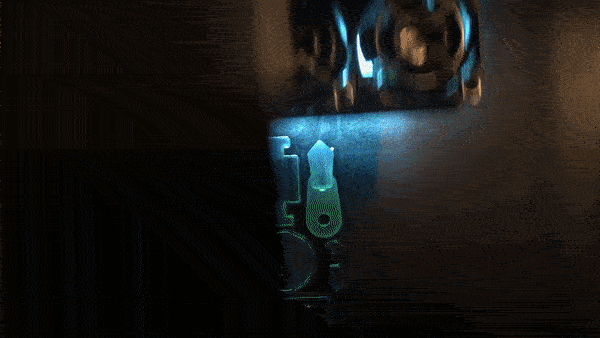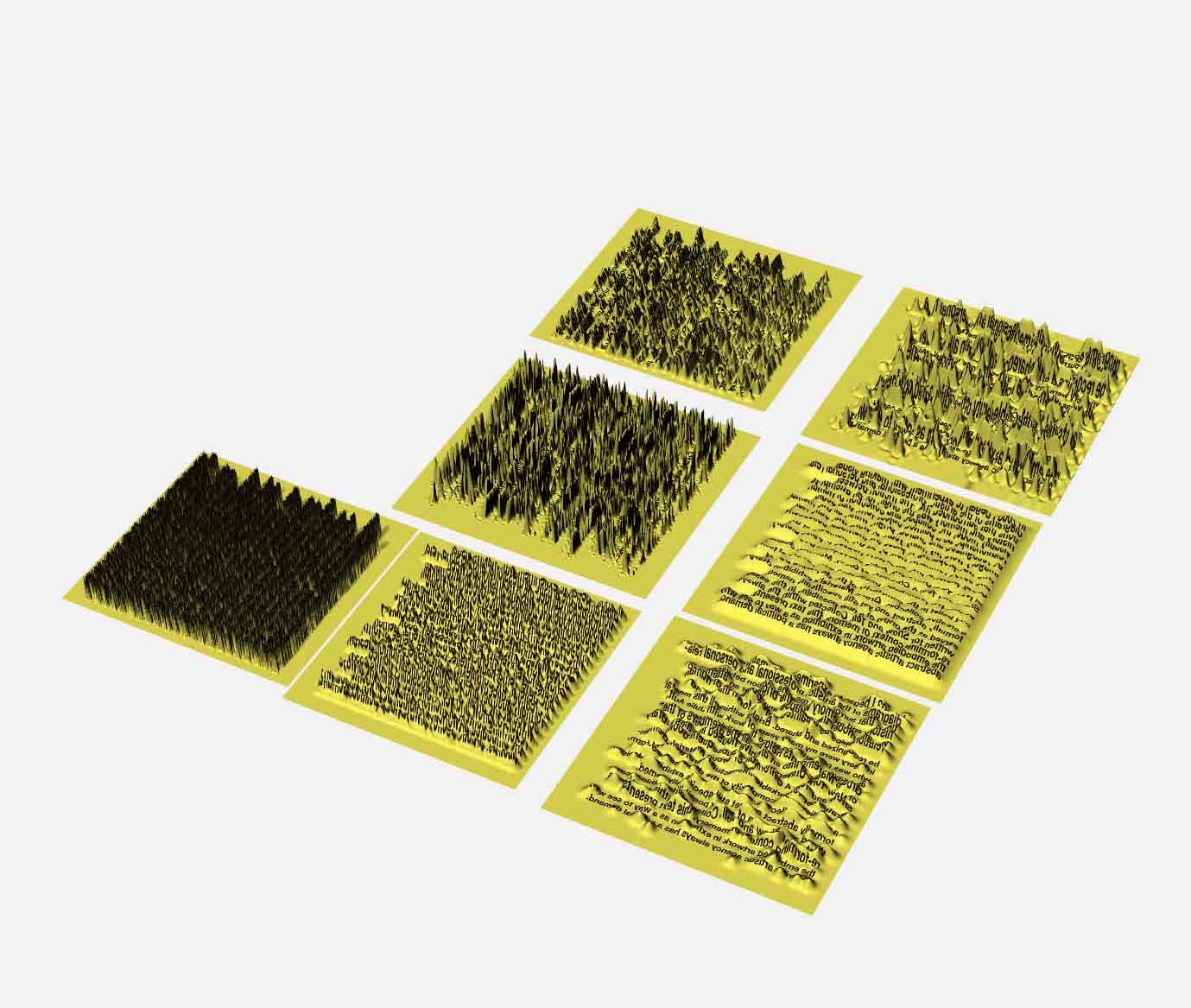Week 3
3D Scanning and Printing
Printing
Was excited to experiment with 3D Printing having never worked with it before in the past. As a group we decided to print the same tolerance test piece on both machines to get a sense of their differences. I was very impressed with what was possible with the higher end machines. They can produce objects at a very high resolution, and the ability to embed things inside the support medium was interesting.


Heightmapping Experiments
I began thinking about a diagram I had seen at a museum of Harvard depicting a three dimensional graph. I figured out a way to extrude a surface based on the light/dark values in a photograph called “Heightmapping” (in Rhino), and experimented in various ways with this technique.
I was interested in using this technique to experiment with its graphic/typographic possibilities, and experimented with a text from Writings and Conversations by Doug Ashford, which discusses visual diagrams of professional, personal and artistic relations in object form. I experimented with the various thresholds and options in the command function to determine what was possible.








Working with Shadows
I starting experimenting running the same image through the height mapping process multiple times, which a strong directional light generating shadows which would produce the form of the following extrusion. I was attempting to see if I could create a form which would produce the letters through their shadow when printed.


We clamor for the right to opacity for everyone.
Working with the phrase borrowed from French/Martinican writer, poet and philosopher Edouard Glissant’s book, Poetics of Relation. I generated the shadow-form of this phrase, and printed it on the 3D Printer. After printing, I removed the supporting medium with the pressurized water jet.





Scanning
For the 3D scanning component, I worked with some others using the Sense scanner to produce a few portraits. With all the glitches inherent to the device, we had a hard time producing particularly useful scans. I did enjoy the images which saved alongside these files, which seemed to show the various mesh-slices which the software divided up.

